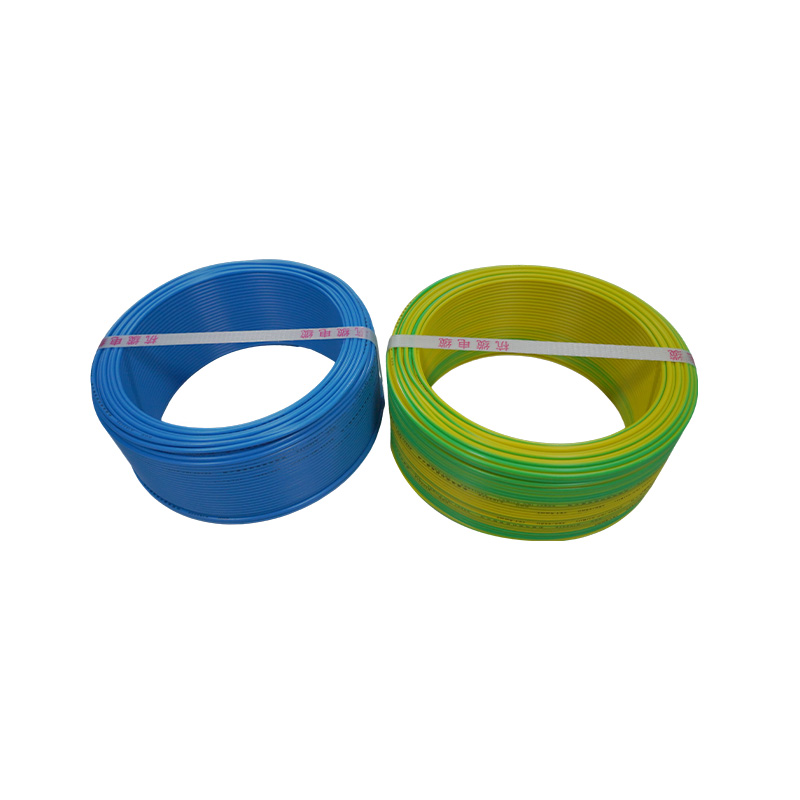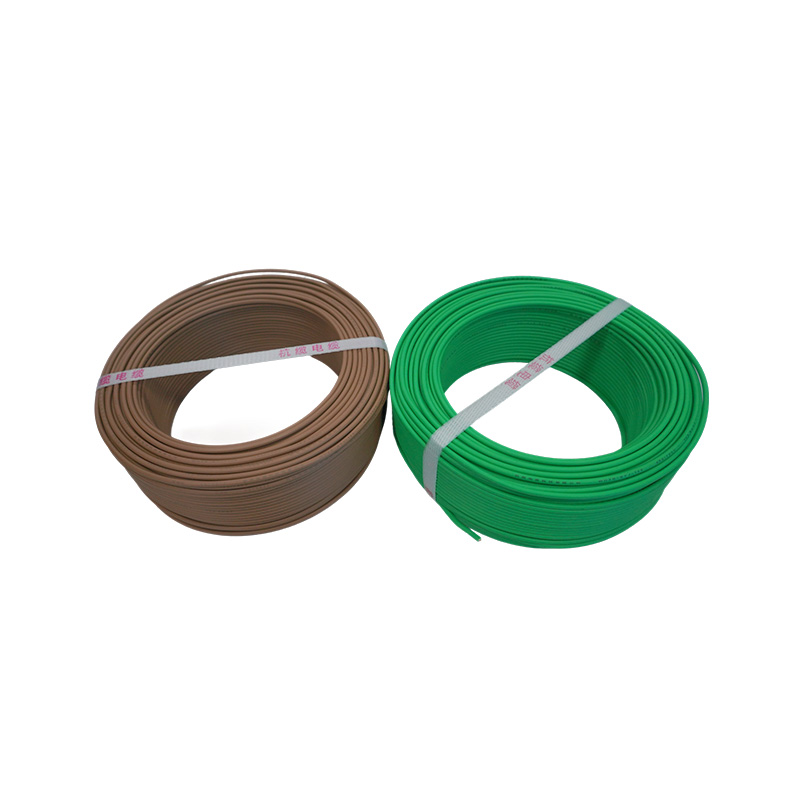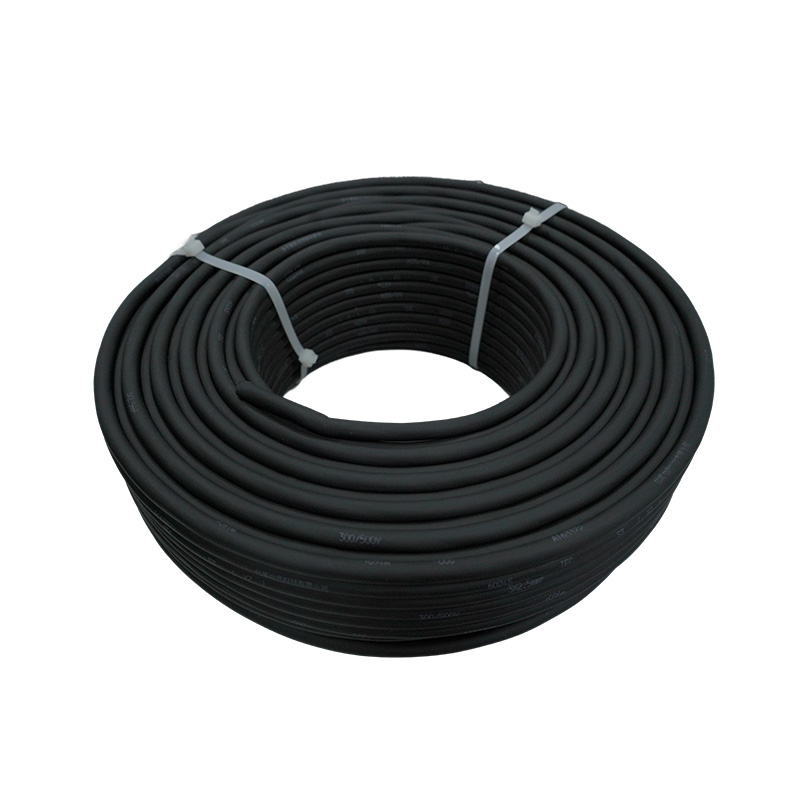How does the high mechanical strength of general-purpose rubber-sheathed flexible cable cope with harsh working conditions such as crushing and impact?
Release Time : 2025-10-30
In modern industry and daily life, household appliances, power tools, and various mobile electrical devices are widely used in complex and ever-changing working environments. The power cables of these devices often face severe challenges such as frequent bending, dragging, trampling, vehicle crushing, and even mechanical impact. Once the cable is damaged by external forces, resulting in insulation breakage, conductor fracture, or short circuit leakage, it not only affects the normal operation of the equipment but may also cause safety accidents such as electric shock and fire. General-purpose rubber-sheathed flexible cable, with its superior high mechanical strength, has become an ideal choice for coping with harsh working conditions. Cables made of EPDM (ethylene propylene diene monomer) material, in particular, while ensuring flexibility, exhibit excellent pressure resistance, impact resistance, and abrasion resistance, providing a solid guarantee for power transmission.
1. EPDM Rubber: An Ideal Sheath Material Combining Elasticity and Toughness
The core advantage of general-purpose rubber-sheathed flexible cable stems primarily from its sheath material—EPDM. EPDM is a synthetic elastomer with excellent weather resistance, ozone resistance, and chemical stability. More importantly, its highly cross-linked molecular structure endows the material with excellent tear resistance and resilience. When the cable is subjected to external pressure or impact, the EPDM sheath can absorb energy through elastic deformation and quickly return to its original shape after the force is released, avoiding permanent deformation or cracking. This "softness overcomes hardness" characteristic effectively protects the internal conductor and insulation layer from damage when faced with instantaneous high pressure such as being stepped on or run over by wheels.
2. Multi-layer structural design: Layered protection, enhancing overall strength
High mechanical strength is not achieved solely through a single material, but rather through a scientifically designed multi-layer composite structure. A typical general-purpose rubber-sheathed flexible cable consists of, from the inside out: high-purity oxygen-free copper conductor → EPDM insulation layer → filler reinforcement layer → EPDM rubber sheath. The filler layer often uses non-hygroscopic fibers or rubber strips to fill the gaps between conductors, enhancing the cable's roundness and resistance to compression; while the outer rubber sheath is typically thicker than that of ordinary PVC cables, forming a robust physical barrier. Some high-end products also incorporate aramid fiber braided layers or steel tape armor into the sheath, further enhancing tensile, compressive, and puncture resistance, making them particularly suitable for high-risk locations such as construction sites and factory workshops.
3. Resisting Crushing Pressure: Resistant to Compression and Ensuring Internal Structural Integrity
In warehouses, repair shops, or outdoor work sites, cables are frequently run over by forklifts, handcarts, and even cars. Ordinary plastic cables are highly susceptible to sheath flattening and insulation rupture under heavy pressure, resulting in exposed conductors. However, general-purpose rubber-sheathed flexible cables, thanks to the high elasticity and thick sheath of EPDM material, can maintain structural integrity even after withstanding tons of pressure. Their outer rubber layer has excellent stress dispersion capabilities, evenly distributing concentrated loads across the entire cross-section, avoiding localized stress concentration. Even in the event of temporary deformation, they can quickly rebound and restore conductivity after the pressure is released, truly achieving "unbreakable and core-unbroken."
4. Shock Resistance: Dual Protection Against Shock and Fatigue
Besides static pressure, cables also need to withstand dynamic impacts, such as falling tools and violent shaking during equipment movement. The high toughness of the rubber sheath allows it to absorb impact energy, reducing vibration transmission to the internal conductor. Simultaneously, the conductor structure, composed of multiple strands of fine copper wire, possesses excellent fatigue resistance, making it less prone to breakage even under repeated bending and vibration. This combination of "flexible exterior and tough interior" ensures stable electrical performance throughout long-term use.
5. Wear and Oil Resistance: Adaptable to Complex Industrial Environments
In environments prone to oil contamination, ordinary cable sheaths are easily corroded by lubricating oil and coolant, becoming brittle and cracking. Custom-designed rubber-sheathed cables, however, are oil-resistant. The EPDM material exhibits strong resistance to various mineral oils, greases, and weak acid and alkali solutions, ensuring long-term service in harsh chemical environments. Furthermore, its smooth surface and moderate hardness, along with a low coefficient of friction, significantly improve wear life, making it suitable for frequently towed mobile equipment such as welding machines, high-pressure washers, and garden machinery.
In summary, the reliable operation of general-purpose rubber-sheathed flexible cables under harsh conditions such as crushing and impact is attributed to the high elasticity of EPDM material, its multi-layered reinforced structure design, and scientific process optimization. It is not only a carrier of power transmission but also a "lifeline" for the safe operation of equipment. With the increasing prevalence of industrial automation and mobile electrical equipment, the requirements for the mechanical performance of cables will continue to rise, and high-mechanical-strength general-purpose rubber-sheathed flexible cables will undoubtedly play an even more crucial role in the future.
1. EPDM Rubber: An Ideal Sheath Material Combining Elasticity and Toughness
The core advantage of general-purpose rubber-sheathed flexible cable stems primarily from its sheath material—EPDM. EPDM is a synthetic elastomer with excellent weather resistance, ozone resistance, and chemical stability. More importantly, its highly cross-linked molecular structure endows the material with excellent tear resistance and resilience. When the cable is subjected to external pressure or impact, the EPDM sheath can absorb energy through elastic deformation and quickly return to its original shape after the force is released, avoiding permanent deformation or cracking. This "softness overcomes hardness" characteristic effectively protects the internal conductor and insulation layer from damage when faced with instantaneous high pressure such as being stepped on or run over by wheels.
2. Multi-layer structural design: Layered protection, enhancing overall strength
High mechanical strength is not achieved solely through a single material, but rather through a scientifically designed multi-layer composite structure. A typical general-purpose rubber-sheathed flexible cable consists of, from the inside out: high-purity oxygen-free copper conductor → EPDM insulation layer → filler reinforcement layer → EPDM rubber sheath. The filler layer often uses non-hygroscopic fibers or rubber strips to fill the gaps between conductors, enhancing the cable's roundness and resistance to compression; while the outer rubber sheath is typically thicker than that of ordinary PVC cables, forming a robust physical barrier. Some high-end products also incorporate aramid fiber braided layers or steel tape armor into the sheath, further enhancing tensile, compressive, and puncture resistance, making them particularly suitable for high-risk locations such as construction sites and factory workshops.
3. Resisting Crushing Pressure: Resistant to Compression and Ensuring Internal Structural Integrity
In warehouses, repair shops, or outdoor work sites, cables are frequently run over by forklifts, handcarts, and even cars. Ordinary plastic cables are highly susceptible to sheath flattening and insulation rupture under heavy pressure, resulting in exposed conductors. However, general-purpose rubber-sheathed flexible cables, thanks to the high elasticity and thick sheath of EPDM material, can maintain structural integrity even after withstanding tons of pressure. Their outer rubber layer has excellent stress dispersion capabilities, evenly distributing concentrated loads across the entire cross-section, avoiding localized stress concentration. Even in the event of temporary deformation, they can quickly rebound and restore conductivity after the pressure is released, truly achieving "unbreakable and core-unbroken."
4. Shock Resistance: Dual Protection Against Shock and Fatigue
Besides static pressure, cables also need to withstand dynamic impacts, such as falling tools and violent shaking during equipment movement. The high toughness of the rubber sheath allows it to absorb impact energy, reducing vibration transmission to the internal conductor. Simultaneously, the conductor structure, composed of multiple strands of fine copper wire, possesses excellent fatigue resistance, making it less prone to breakage even under repeated bending and vibration. This combination of "flexible exterior and tough interior" ensures stable electrical performance throughout long-term use.
5. Wear and Oil Resistance: Adaptable to Complex Industrial Environments
In environments prone to oil contamination, ordinary cable sheaths are easily corroded by lubricating oil and coolant, becoming brittle and cracking. Custom-designed rubber-sheathed cables, however, are oil-resistant. The EPDM material exhibits strong resistance to various mineral oils, greases, and weak acid and alkali solutions, ensuring long-term service in harsh chemical environments. Furthermore, its smooth surface and moderate hardness, along with a low coefficient of friction, significantly improve wear life, making it suitable for frequently towed mobile equipment such as welding machines, high-pressure washers, and garden machinery.
In summary, the reliable operation of general-purpose rubber-sheathed flexible cables under harsh conditions such as crushing and impact is attributed to the high elasticity of EPDM material, its multi-layered reinforced structure design, and scientific process optimization. It is not only a carrier of power transmission but also a "lifeline" for the safe operation of equipment. With the increasing prevalence of industrial automation and mobile electrical equipment, the requirements for the mechanical performance of cables will continue to rise, and high-mechanical-strength general-purpose rubber-sheathed flexible cables will undoubtedly play an even more crucial role in the future.







